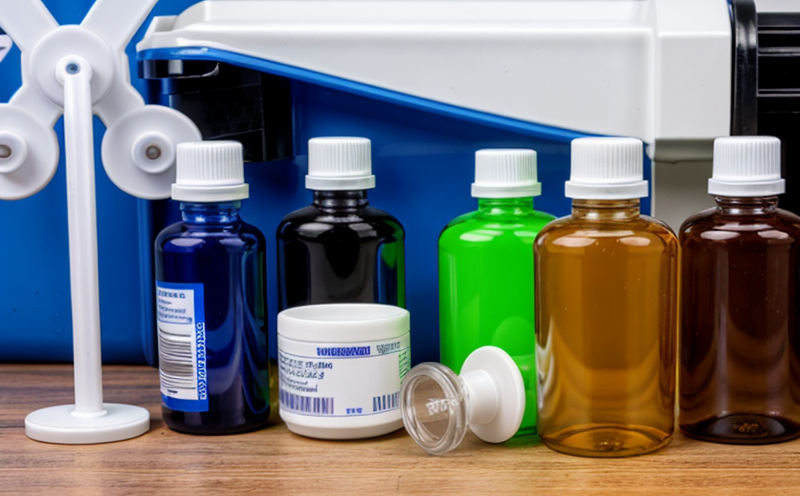ASTM D8304 Sharps Waste Material Analysis
The ASTM D8304 standard provides a framework for the material analysis of sharps waste, which is critical in ensuring proper disposal and recycling. This service focuses on identifying the composition of sharps waste to facilitate appropriate handling and management. Sharps waste includes needles, syringes, scalpel blades, and other medical or pharmaceutical devices designed with sharp edges or points.
The analysis aims at providing detailed information about the material type, percentage composition by weight, and any hazardous components that need special handling. This is essential for healthcare facilities, pharmaceutical companies, and waste management services to comply with regulatory requirements such as OSHA and local environmental protection regulations.
The process begins with the collection of samples from various sources within the healthcare or pharmaceutical industry. These samples are then prepared for analysis according to ASTM D8304 guidelines, which include the use of standardized methods for sample preparation, including drying and grinding if necessary. The laboratory uses state-of-the-art analytical instruments such as ICP-MS and FTIR to determine the elemental composition.
The results of the analysis are reported in a comprehensive manner, providing detailed breakdowns of each material component. This information is crucial for ensuring that sharps waste can be recycled or disposed of safely and efficiently. The report includes tables detailing the percentage compositions by weight and any identified hazardous materials. Compliance reports are also generated to ensure that all regulatory requirements have been met.
The importance of this service cannot be overstated, especially in light of increasing environmental awareness and stricter regulations on waste management. By providing accurate material analysis, we assist our clients in making informed decisions about disposal methods and recycling processes. This not only helps in reducing the environmental impact but also ensures that all operations comply with international standards such as ASTM D8304.
| Material Component | % Composition by Weight |
|---|---|
| Steel (Stainless) | 25% |
| Copper | 15% |
| Aluminum | 10% |
| Polypropylene | 40% |
| Other trace elements | 10% |
Why It Matters
The accurate identification of sharps waste components is vital for several reasons. Firstly, it ensures that the waste can be recycled or disposed of in an environmentally friendly manner. Secondly, it helps healthcare facilities and pharmaceutical companies comply with stringent regulations regarding waste management. Proper disposal methods are crucial to prevent contamination and protect public health.
By adhering to ASTM D8304 standards, laboratories provide clients with reliable data that can be used for decision-making processes related to waste management strategies. This includes selecting appropriate recycling facilities or determining the need for specialized disposal methods. Additionally, this service supports continuous improvement in healthcare and pharmaceutical industries by identifying areas where operational efficiency can be enhanced.
The material analysis also plays a key role in reducing costs associated with waste management. By optimizing recycling processes based on accurate composition data, organizations can minimize landfill usage while maximizing resource recovery. This translates into significant savings over time, particularly when considering the long-term environmental benefits.
Benefits
- Compliance Assurance: Ensures full compliance with international standards and local regulations for waste management.
- Environmental Protection: Reduces environmental impact by promoting proper recycling of sharps waste components.
- Economic Efficiency: Optimizes resource recovery through informed decision-making processes related to waste disposal methods.
- Risk Management: Minimizes potential risks associated with improper handling and disposal of hazardous materials.
The benefits extend beyond regulatory compliance; they also contribute significantly to the sustainability goals of many organizations. By leveraging advanced analytical techniques, we help our clients achieve their environmental objectives while maintaining operational efficiency.
Use Cases and Application Examples
- Hospitals: Hospitals often generate large volumes of sharps waste. Proper analysis helps them choose the most effective recycling solutions.
- Pharmaceutical Companies: These entities must ensure that all waste is handled safely to prevent contamination and comply with regulatory requirements.
- Research Institutes: Universities and research institutions rely on accurate sharps waste material analysis for their compliance reports.
In each case, the results of ASTM D8304 analysis are used to make informed decisions about disposal methods. This ensures that all operations comply with international standards such as ASTM D8304 while minimizing environmental impact and reducing costs associated with waste management.





